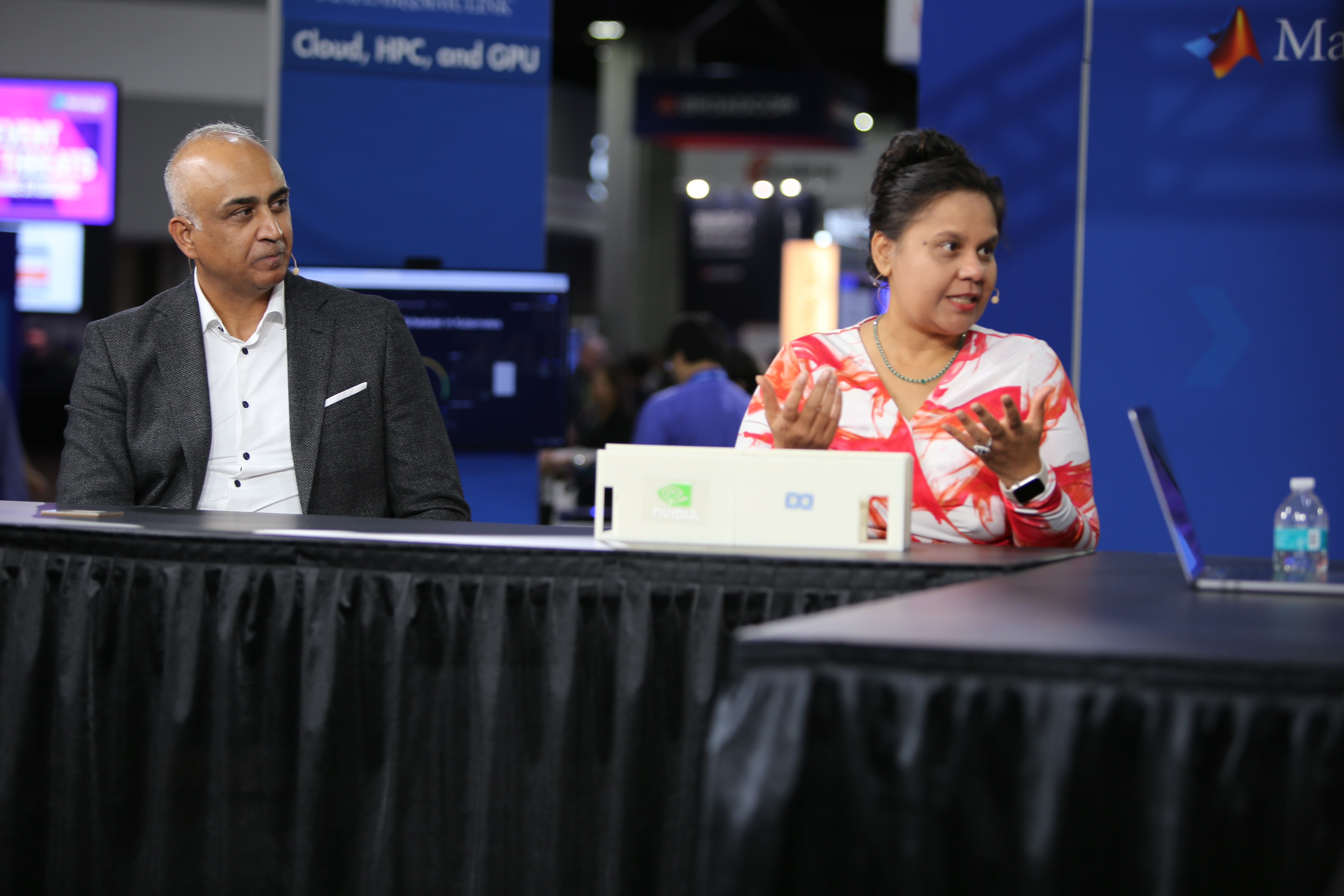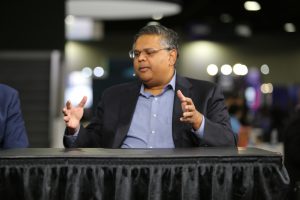 AI
AI
 AI
AI
 AI
AI
What does artificial intelligence or AI factories of the future look like?
That is the question Denvr Dataworks Inc., Broadcom Inc. and Dell Technologies Inc. aim to answer with their combined computing and cooling hardware. AI requires a massive amount of compute, so power and efficiency are key for the construction of modern data centers.

Dell’s Arun Narayanan discusses the company’s collaborations with Broadcom and Denvr.
“We all know that everybody’s running out of data center power and space,” said Vaishali Ghiya (pictured, right), executive officer of global ecosystems and partnerships at Denvr Dataworks. “AI workloads are very power-hungry. So, that is exactly why we designed our Denvr Dataworks private zone, in partnership with Broadcom and Dell, so that we can give customers different choices and options, as well as open architecture. Liquid immersion cooling, as well as liquid to the chip cooling, really results in the efficient power usage as well as a compact footprint.”
Ghiya; Hasan Siraj (left), head of software products, ecosystem, at Broadcom; and Arun Narayanan, senior vice president of compute and networking product management at Dell, spoke with theCUBE Research’s John Furrier at SC24, during an exclusive broadcast on theCUBE, SiliconANGLE Media’s livestreaming studio. They discussed what is next for AI factories and networking. (* Disclosure below.)
Denvr has created modular superclusters, which can house more than 1,000 GPUs in less than 900 square feet, and use liquid immersion cooling as part of an effort to house larger AI workloads. The goal is to build the most efficient rack infrastructure, according to Narayanan.
“The Dell-Broadcom partnership is about open systems,” he said. “We believe ethernet will be the technology of choice for AI networking. We want to be time-to-market, first-to-market, but we want interoperability. You buy an asset today, you want that asset to live for 18 months to 24 months. The next asset comes along, it has to be interoperable.”
Broadcom recently released the Tomahawk 5, a class of Ethernet switching devices, as well as linear drive optics, which remove the digital signal processor’s less electrical components. Both Broadcom and Dell see ethernet as the future of AI networking.
“We’ll see the scale become bigger and bigger over the next four years, but we’ll also see this go down to other verticals,” Siraj said. “We will see enterprise adopters … and from a networking perspective, we believe ethernet will win. It’s already on its way, and it can scale from the largest clusters on the planet to whatever optimizations that are required for inference and other use cases.”
Equally important to the construction of an efficient computing structure and network is the software layer, according to Ghiya. Denvr focuses on working backward from its customers’ business goals to create a complete computing stack that meets their needs.
“We create a full software AI stack on top of [what Dell and Broadcom provide],” she said. “So, starting from the optimizing of the data center for power cooling and space, then layering the networking and storage fabric on top of it, which is based on the open standards. Then doing platform orchestration, which is based on Kubernetes … and then providing rest APIs to the customer to bring that AI workloads to address their key business outcomes.”
Here’s the complete video interview, part of SiliconANGLE’s and theCUBE Research’s coverage of SC24:
(* Disclosure: Dell Technologies Inc. sponsored this segment of theCUBE. Neither Dell nor other sponsors have editorial control over content on theCUBE or SiliconANGLE.)
Support our mission to keep content open and free by engaging with theCUBE community. Join theCUBE’s Alumni Trust Network, where technology leaders connect, share intelligence and create opportunities.
Founded by tech visionaries John Furrier and Dave Vellante, SiliconANGLE Media has built a dynamic ecosystem of industry-leading digital media brands that reach 15+ million elite tech professionals. Our new proprietary theCUBE AI Video Cloud is breaking ground in audience interaction, leveraging theCUBEai.com neural network to help technology companies make data-driven decisions and stay at the forefront of industry conversations.